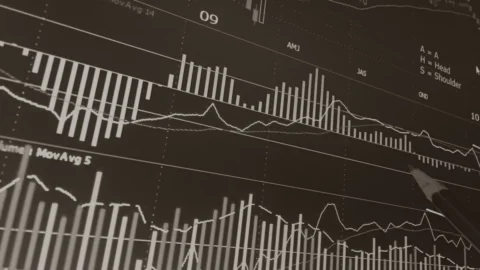Market Thoughts and Portfolio Update – December 17, 2018
During the course of weekend reading, we ran across an interesting quote regarding the value of forecasting by the financial journalist Jane Bryant Quinn that stated, “give them a date or give them a number but don’t give them both.”
Following another roller-coaster week in the equity markets, that sentiment seems especially appropriate for the current market environment. The short-term dynamics and volatility over the last two months have taken their toll on investor psyches, even as the longer-term forecast may not have changed significantly. What this volatility is telling us is the fear of the unknown – specifically fears of potential policy mistakes relating to the Fed and our trade relationship with China. While the Fed question may have been resolved a few weeks ago, the potential effects of the China question has not – at least to the satisfaction of many short-term traders.
However, long-term investment is driven by fundamentals and the most important fundamental measure relates to economic growth and earnings. It is very interesting to note that the past eight recessions that have occurred since 1960 all happened while the real rate (nominal rate minus inflation) was above 2%; we are currently at 0%. It would be extremely unlikely for a recession to start with this backdrop.
Estimating the probability of recession seems to have affected the markets in the short- term as well. However, over the long-term, market valuations follow earnings, which are still INCREASING, albeit at a potentially slower pace than last year, which was fueled in part by corporate tax cuts. However, even after factoring in a lower growth trajectory for earnings in 2019, a base case for earnings would “forecast” an end of year S&P level of 2750, which would imply about an 8% total return, including dividends, from today’s levels. We believe a more likely 2019 return scenario would imply roughly 10% earnings growth (half of 2018) and a current market multiple and “forecast” total return closer to 15%. Finally, although we have mentioned this in previous notes, it bears repeating that there is historical precedent on our side. Since 1950, the forward 12- month return following midterm elections has averaged close to 15%; just food for thought.
The hardest thing for investors to do in a volatile market is to remain true to their investment process. Why? Because most investors do not have one. If you ask people what caused passengers to die on the Titanic, most will reply that the ship hit an iceberg. While that was true, the real reason that passengers died was because the ship wasn’t prepared with enough lifeboats. The proper action plan is more important to success than avoiding the occasional iceberg. Risk events tend to be discrete disruptions and it is more important to have a plan to deal with the after-effects than to try to “forecast” the next one. Over the long term, a consistent investment process that focuses on risk will be able to navigate the investment icebergs that will occur, and our job is to monitor the short-term risks against the long-term investment thesis.
Right now, the short-term market psychology is extremely negative, and in our view, somewhat irrational in nature. However, we have seen in the past that these conditions can persist longer than expected, because by definition, they are fueled by irrational market forces. As we have stated previously, the biggest impediment to successful long-term investment return is the avoidance of large losses, and while we are not yet at that point, we are taking some steps to de-risk the portfolio and manage the process in this volatile short-term period. These are the actions that we will be taking in the TAAP portfolios:
1) Reduce high volatility technology exposure and replace with lower volatility
2) Marginally reduce exposure to the financial sector
3) Reduce energy exposure and replace with short-term fixed income
4) Reduce current high-yield exposure and replace with higher quality, more liquid fixed income
5) Reduce S&P market volatility exposure to low-volatility exposure
These portfolio changes are designed to somewhat mitigate the potential downside of further negative market performance, but still allow for positive performance over the longer term. We will continue to monitor risk developments and make adjustments as we see necessary. Even more important, during this volatile period, please do not hesitate to call our office to discuss any questions you may have.
Need Some Help?
If you’d like some help from one of our CPAs or CERTIFIED FINANCIAL PLANNER (CFP®) advisors regarding this strategy and how it applies to you, the Rhame & Gorrell Wealth Management team is here to help.
Our experienced Wealth Managers facilitate our entire suite of services including financial planning, investment management, tax optimization, estate planning, and more to our valued clients.
Feel free to contact us at (832) 789-1100, [email protected], or click the button below to schedule your complimentary consultation today.
IMPORTANT DISCLOSURES:
Corporate benefits may change at any point in time. Be sure to consult with human resources and review Summary Plan Description(s) before implementing any strategy discussed herein.Rhame & Gorrell Wealth Management, LLC (“RGWM”) is an SEC registered investment adviser with its principal place of business in the State of Texas. Registration as an investment adviser is not an endorsement by securities regulators and does not imply that RGWM has attained a certain level of skill, training, or ability. This material has been prepared for informational purposes only, and is not intended to provide, and should not be relied on for, tax, legal or accounting advice. You should consult your own CPA or tax professional before engaging in any transaction. The effectiveness of any of the strategies described will depend on your individual situation and should not be construed as personalized investment advice. Past performance may not be indicative of future results and does not guarantee future positive returns.
For additional information about RGWM, including fees and services, send for our Firm Disclosure Brochures as set forth on Form ADV Part 2A and Part 3 by contacting the Firm directly. You can also access our Firm Brochures at www.adviserinfo.sec.gov. Please read the disclosure brochures carefully before you invest or send money.













